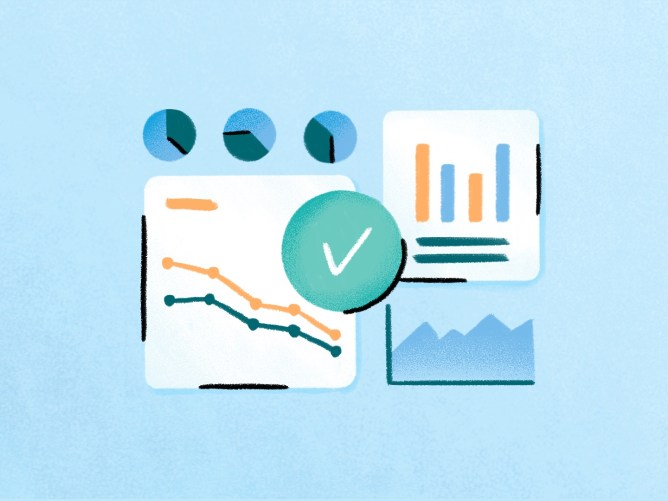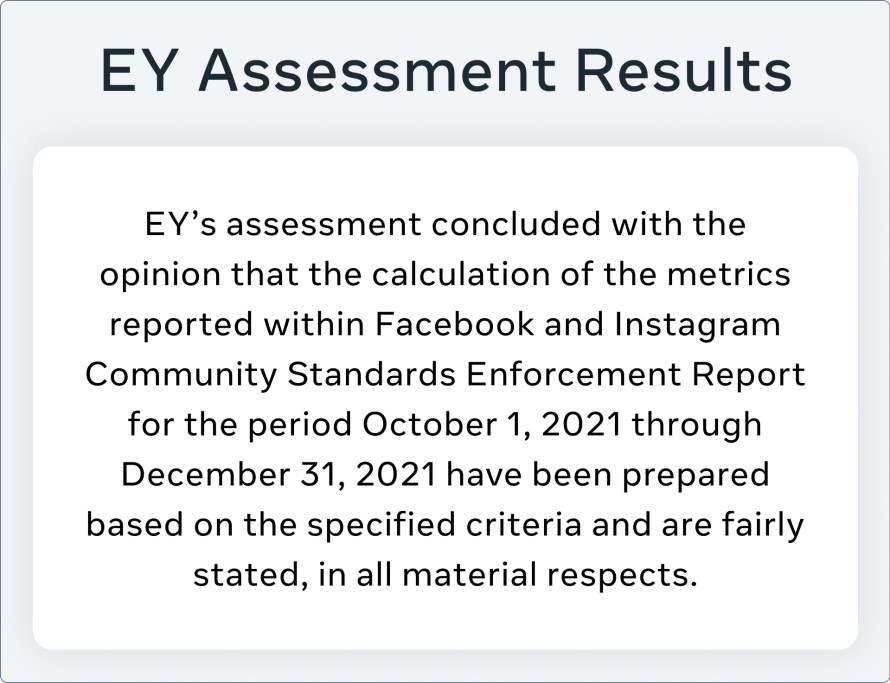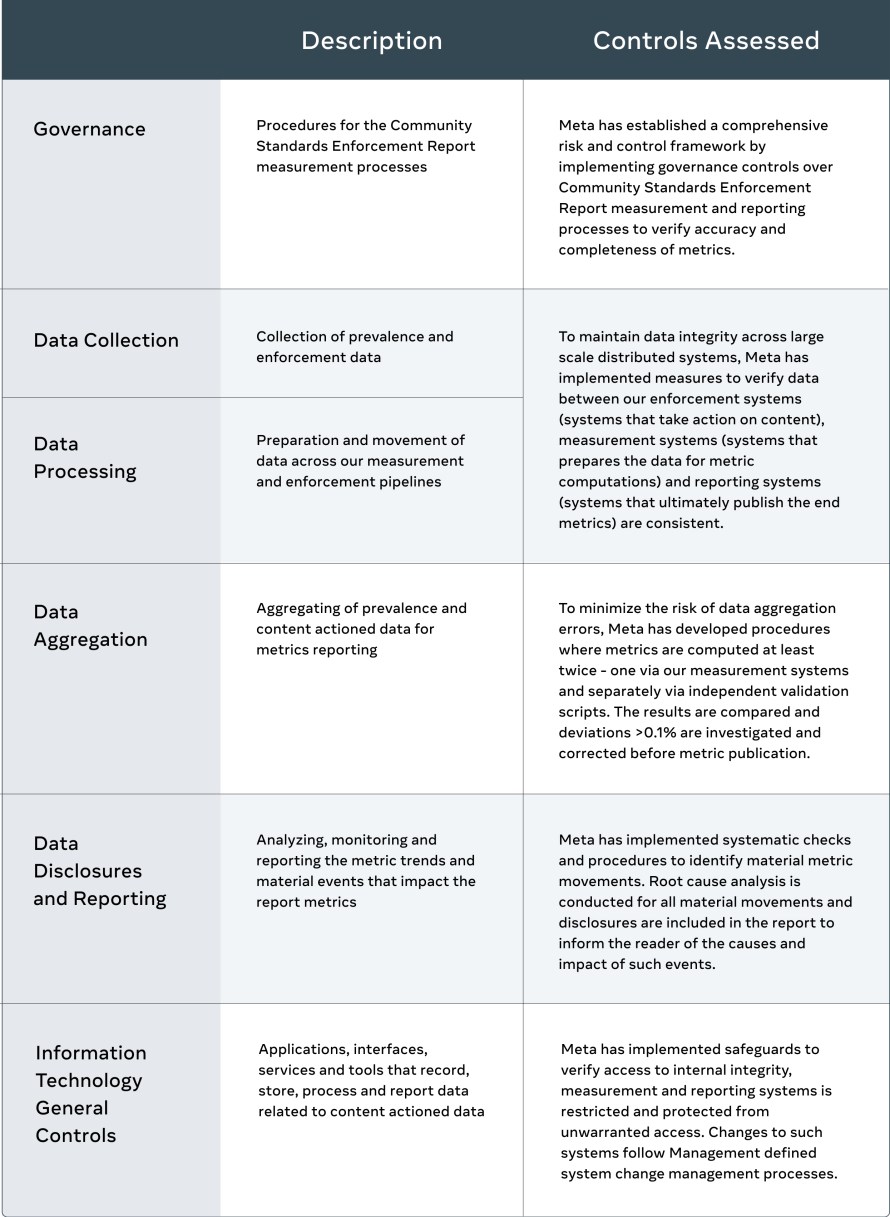
In August of 2020, we committed to undertaking and releasing an independent, third-party assessment of our Community Standards Enforcement Report. Today, we’re delivering on that commitment and publishing EY’s independent findings.
We selected EY based on their expertise, experience and ability to work with large, novel data sets. To ensure the metrics were measured and reported correctly, we underwent in-depth preparation to give EY an understanding of our processes, systems and controls. We also provided them with data and evidence requested to conduct their assessment.
The globally adopted Committee of Sponsoring Organizations of the Treadway Commission (COSO) framework was selected as the criteria against which the assessment would evaluate Meta’s internal controls. This rigorous and widely used internal control framework was used to verify the accuracy of the metrics and validate the design and operating effectiveness of the controls. It’s the same framework we use to assess our internal controls over financial reporting and the financial statements that are included in our Annual Report filed with the Securities and Exchange Commission (SEC).
As part of the assessment, Meta provided EY with full access to the necessary data, documentation and evidence requests. We also gave access to dozens of employees across data science, data engineering, software engineers, product and program managers and Internal Audit teams working on the Community Standards Enforcement Report. The examination was conducted in accordance with the attestation standards as established by the American Institute of Certified Public Accountants and consisted primarily of 1) applying inspection, recalculation and analytical procedures 2) making inquiries of persons responsible for the subject matter and 3) obtaining an understanding of the measurement systems and processes used to generate, process, aggregate and report the subject matter.
EY evaluated the metrics and reporting methods for the Community Standards Enforcement Report covering the fourth quarter of 2021. As part of their assessment, EY focused on the following areas: Governance, Data Collection, Data Processing, Data Aggregation, Data Disclosures and Reporting and Information Technology General Controls. Learn more about the scope of the assessment.
This assessment builds on our previous work in 2018 with international experts in measurement, statistics, law, economics and governance, who provided an independent, public assessment of the metrics we share in the enforcement report. Since then, we have continued to seek out feedback from external stakeholders and experts, including from the Oversight Board, and are working to expand our transparency reports. As we shared today, we are also committing to measuring and reporting metrics around accuracy of our enforcement decisions.
While this assessment looked at the accuracy of the metrics we report, we believe independent, third-party assessments of our integrity systems and processes are also an important part of delivering accountability. We look forward to continuing to build on this commitment and expanding our transparency and accountability efforts, working with industry partners, issue experts and policymakers across the world.
As we said at the beginning of this process, no company should grade its own homework, and the credibility of our systems should be earned, not assumed. Accurate and meaningful transparency is critical to holding platforms accountable. This assessment is a step in that direction.
The post Community Standards Enforcement Report Assessment Results appeared first on Meta.


















 English (US) ·
English (US) ·